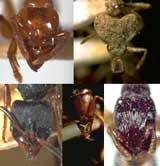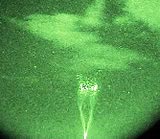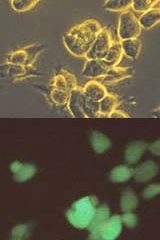
It may be possible to find the causes for autism in over a third of cases, suggests research in the Journal of Medical Genetics. And these are likely to include a range of factors.
Autism is a chronic and severe disorder that takes the form of severely impaired language and social skills, delayed development, and repetitive behaviours. Three times as many boys as girls are affected, and three quarters of those with autism will have a mental disability. It is thought that a combination of a g

Successful Test Observations With Powerful New Instrument at Paranal
One of the most fundamental tasks of modern astrophysics is the study of the evolution of the Universe. This is a daunting undertaking that requires extensive observations of large samples of objects in order to produce reasonably detailed maps of the distribution of galaxies in the Universe and to perform statistical analysis.
Much effort is now being put into mapping the relatively nearby space and the

Formidable catalogue puts army of ants online.
After four years of cooperation and tenacity worthy of their quarry, ant experts have completed Antbase, a centralized, online information resource cataloguing all 11,000 known species of ant.
Its creators hope that Antbase will one day become the ant equivalent of GenBank, the public database of genetic sequence data, and a boon not just for ant specialists, but for entomologists and ecologists of every kind.
Ant ta

Deserts covered Central Asia as early as 22 million years ago
The great Asian deserts developed 22 million years ago at the latest, 14 million years earlier than had been thought. So concludes a new analysis of Chinese soils, filling in another piece of the puzzle of the Himalayas’ birth.
Today, huge deserts characterize the vast landmasses inside Asia, the largest continent on Earth. Here, cut off by the Himalayas from the humidity of the Indian Ocean and far from any othe

Blue jets connect Earth’s electric circuit.
Video images captured in Puerto Rico suggest that blue flashes of light, much like lightning, feed energy from thunderstorms up into the Earth’s ionosphere – a blanket of electrically charged air some 70 kilometres above the ground 1 .
Some researchers suspect that such phenomena may also fix nitrogen for plants to use and interact with the ozone layer 2 .
The images, taken in September 2001

Fusion may explain adult stem-cell morphing.
The hyped ability of adult stem cells to sprout replacement tissue types is being called into question. They may instead be fusing with existing cells, say two new reports, creating genetically mixed-up tissues with unknown health effects.
Recent studies have shown that adult stem cells transplanted from one tissue, such as blood, can spawn the cell types of another, such as nerves. The findings have stirred intense interest in st

– new calculation confirms standard model of particle physics. Contribution of hadronic vacuum polarization determined with unprecedented accuracy. The magnetic moment of the muon is an important precision parameter for…
Technique may prevent formation of unwanted waves that siphon off needed energy. Heating plasma to the ultra-high temperatures needed for fusion reactions requires more than turning the dial on a…

An international team of astronomers, led by researchers from the Astronomical Observatory of the University of Warsaw, have identified a new class of cosmic X-ray sources. The findings have been…

How deubiquitinases USP53 and USP54 cleave long polyubiquitin chains and how the former is linked to liver disease in children. Deubiquitinases (DUBs) are enzymes used by cells to trim protein…

Conceptual blueprint to analyze experimental catalyst data. Machine learning (ML) models have recently become popular in the field of heterogeneous catalyst design. The inherent complexity of the interactions between catalyst…

Antibody that Neutralizes Inhibitory Factors Involved in Nerve Regeneration Leads to Enhanced Motor Function after Acute Spinal Cord Injury. Researchers at 13 clinics in Germany, Switzerland, the Czech Republic and…

How simulations help manufacturing of modern displays. Modern materials must be recyclable and sustainable. Consumer electronics is no exception, with organic light-emitting diodes (OLEDs) taking over modern televisions and portable…

“Neurons that fire together, wire together” describes the neural plasticity seen in human brains, but neurons grown in a dish don’t seem to follow these rules. Neurons that are cultured…

The quest for sustainable energy solutions has been a major focus of scientific research for decades. Solar energy, a clean and renewable source, has emerged as a promising alternative to…

With a processing speed a billion times faster than nature, chip-based laser neuron could help advance AI tasks such as pattern recognition and sequence prediction. Researchers have developed a laser-based…

New technology could remotely identify various types of plastics, offering a valuable tool for future monitoring and analysis of oceanic plastic pollution. Researchers have developed a new hyperspectral Raman imaging…

Artificial Intelligence (AI) has established a strong presence across industries, large and small. The “VoBaKI” research project has empowered small and medium-sized enterprises (SMEs) with an innovative tool to independently…